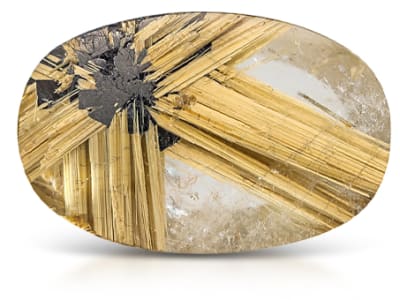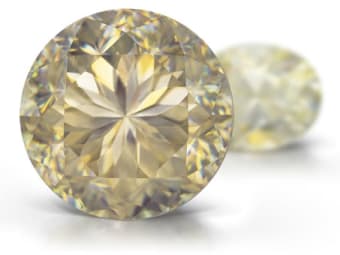The name rutile comes from the Latin rutilas, meaning "reddish," as this mineral is usually red to golden in color. Rutile forms in a wide array of habits. It is often seen as an inclusion within gems either as large needles that make bold patterns, or as fine, microscopic fibers that cause chatoyancy and asterism in gems. It is highly refractive and is occasionally found in facetable sizes.
General Information
LWUV: Inert
Rutile Colors
-
 Black
Black -
 Brown
Brown -
 Colorless
Colorless -
 Red
Red -
 Yellow
Yellow
Rutile Spectra
We acknowledge the significant scientific contributions of John S Harris, FGA to the study of gemstone spectra and with deep appreciation to him, acknowledges the use of his images and related notes about gemstones and their spectra in the educational materials on this website.
Countries of Origin
Myanmar; Russian Federation; Unknown; Sri Lanka; Brazil
Care
Normal, gentle care
Creation Classification
Rutile (Synthetic)
Synthetic rutile can be produced synthetically by either the Czochralski method or flame fusion method.Because of rutile's high refractive index, it was used as an early diamond simulant. However, it is rarely used today as such because of its low hardness.Synthetic gems have the same chemical, optical, and physical properties of their natural counterparts, but are a more cost-effective alternative to a natural gem.
LWUV: Inert


